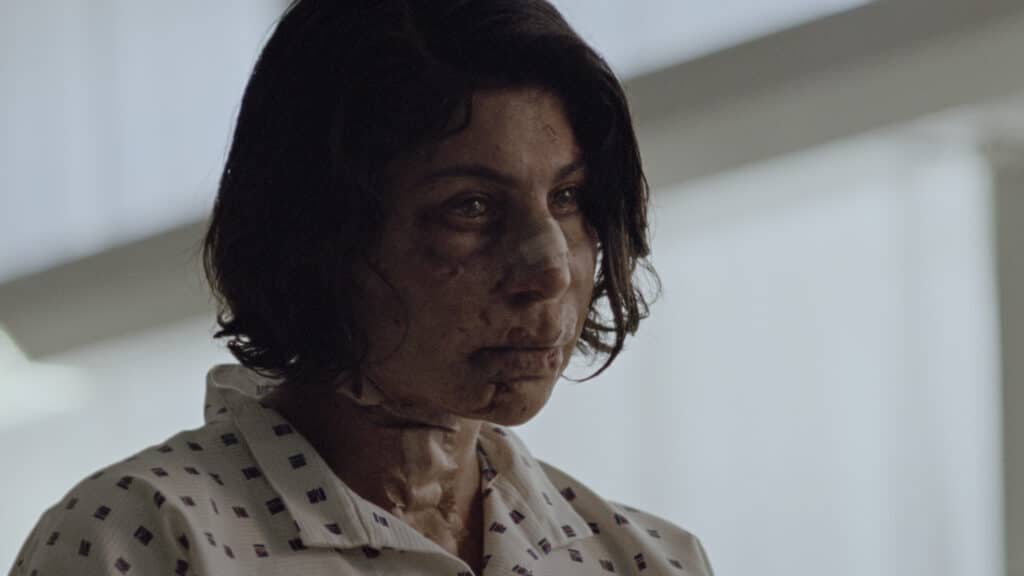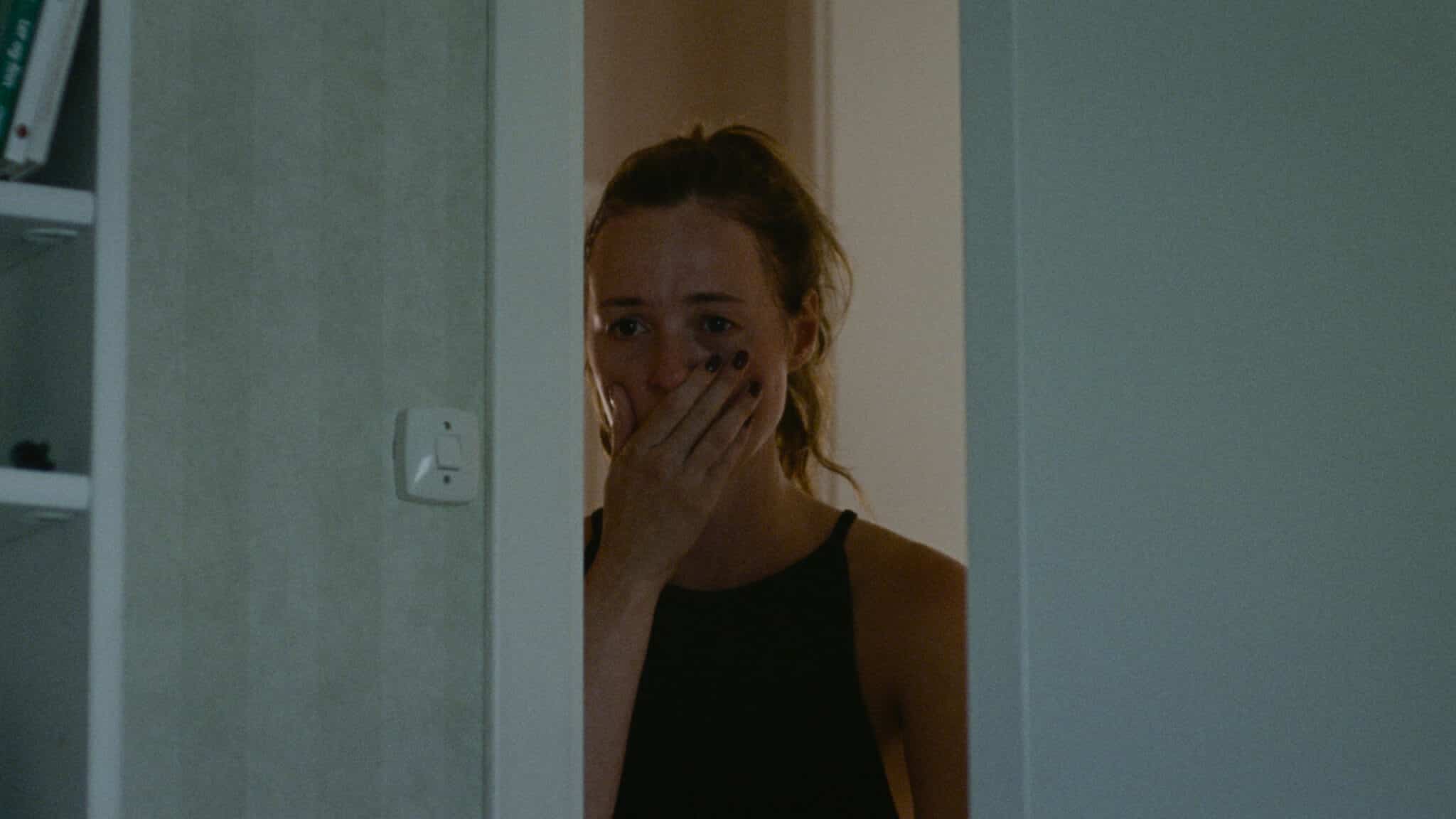
Are the undead growing less vicious? Once upon a time, they’d be up and at you the second they were resurrected, but a few films of late have taken a drastically different approach, repositioning the dead as a moral and philosophical quandary – which brings us straight to Handling the Undead, a film which very nearly skips straight past the presence of the undead in order to ponder their existence. The resulting, more-or-less arthouse approach to the topic will not be for everyone. In some ways, it’s not for me either, but the film’s deep commitment to its bleak, minimalist approach does hold a certain appeal.
We start, to give director Thea Hvistendahl credit, as we mean to go on: things are quiet, and they’re ominous. The credits hang in darkness for what feels like a suspiciously long period of time, before finally ceding to opera music. We meet one of our characters, though like most of the characters here, we find out very little about him. This older man sits at home alone; after a while, he gets up, grabs some food from the fridge and sets off from his apartment to another apartment in a different block. Still silent, he enters, where he encounters a young woman who – there’s a pattern emerging – studiously ignores him. Trauma hangs in the air. Clearly keen that she eats something, he plates up a meal for her, but she gets past him, finally telling him that she will, ‘eat at work’. Unfazed, he covers her plate with clingfilm, and puts it in the fridge, with all the other clingfilmed plates. We follow the young woman to work, watch her keeping calm and carrying on, clearly evading well-intentioned offers of help from her colleagues.
Elsewhere, we encounter some other domestic scenarios: an elderly woman says goodbye to a relative at a chapel of rest; a reluctant teen is tasked with babysitting her younger brother, Kian, as her her parents head out by car. What is going to link these stories, we wonder?
Death. It’s death. It’s undeath, too, but perhaps not quite as we know it. Later that evening, a weird electrical phenomenon overruns the country: radios crackle, heads ache, lights blink out. Whilst all of this is over as soon as it begins, it has an incredible impact: it resurrects the dead. Just the newly dead? That is not an answer we get from the screenplay at hand, but for those people we have already met, it has a significant impact, as they have recently lost a loved one. Of course, the reappearance of these grieved-for people is a profound shock; we have no schema for such things. Why would we?
A lot of horror cinema usually skips quite neatly past the schema idea because things are a tad more urgent; Handling the Undead, by contrast, has all the time in the world to show us everyday people struggling as the only great certainty they have ever known, shatters. Nonetheless, there are also some meticulous, and rather repellent examples of of attention to detail when it comes to the dead themselves. Of course, for example, their eyes might be uncomfortably dry. If this film resembles any other film, then it’s Birth/Rebirth, which shares some of the same predilections, and takes the same approach to the undead – here, as there, shadows of their former selves, inert more than wicked, and presenting issues for human relationships. Handling the Undead focuses with great scrutiny on human relationships, even if we glean whatever we know. No one expounds anything. The dead are only slightly more reticent than the living.
However, even before the going gets properly strange, the films sets out its stall as an odd, minimalist piece of horror-drama. From the array of perfectly comfortable but anodyne housing, to the amount of aerial shots creating distance, to the slow, deliberate pace of the film, you always feel at arm’s length. The film looks weirdly cold throughout, too, despite it being set in the middle of summer. When we first meet Anna (Renate Reinsve), she’s sat nearly on top of a room fan; at work, her face is moist with perspiration. Throughout the film, people sit around in various states of undress, but it looks like the whole thing is in some kind of deep freeze. It makes New French Extremity look positively tropical by comparison. Essentially, the world feels awry, even before the phenomenon takes hold: there’s a definite, sustained artistic vision behind the film, lending a kind of consistency to proceedings which does help to hold things together.
The film’s key issue is that all of this build up, aesthetic and otherwise, begins to groan and collapse under its own weight. Its unusual depiction of the undead – for the most part as mute, unfeeling, inexplicable beings – gives us the bare bones of an engaging plot point, but also a sticking point. So the dead are like this, then: what happens now? Where do we go from here? The screenplay hints that similar crises are unfolding everywhere, though we learn almost nothing about what could have been a fascinating contextual backdrop for the more intimate storytelling. And, when things do become more interesting, it’s when the film gets closer to far more familiar treatments of the undead, and what the undead tend to do. That’s a problem, because we get neither fuller world-building, dramatic tension, nor resolution. The original short story, by Let The Right One In author John Ajvide Lindqvist (who also co-wrote the screenplay) looks more at the conflicts between society and individual in such a scenario. Indeed, the film has been in ‘production hell’ for some time: perhaps some of that troubled development has had an impact on the film itself.
But, troubled birth (or troubled resurrection) aside, the film does offer sometimes brutal, but more often very sad, sustained depictions of grief and loss, and it deserves credit for that. It’s the old idea that ‘sometimes dead is better’, but handled very carefully and deliberately. It will be too sparse, too ponderous for some audiences, but Handling the Undead does boast a crisp, artistic presentation, a brooding, death-march pace and plenty of rich symbolism. It has its issues, but all in all, it’s quietly provocative.
Handling the Undead (2024) opens exclusively at the IFC Center in NY on May 31st, then in select cities on June 7th.
